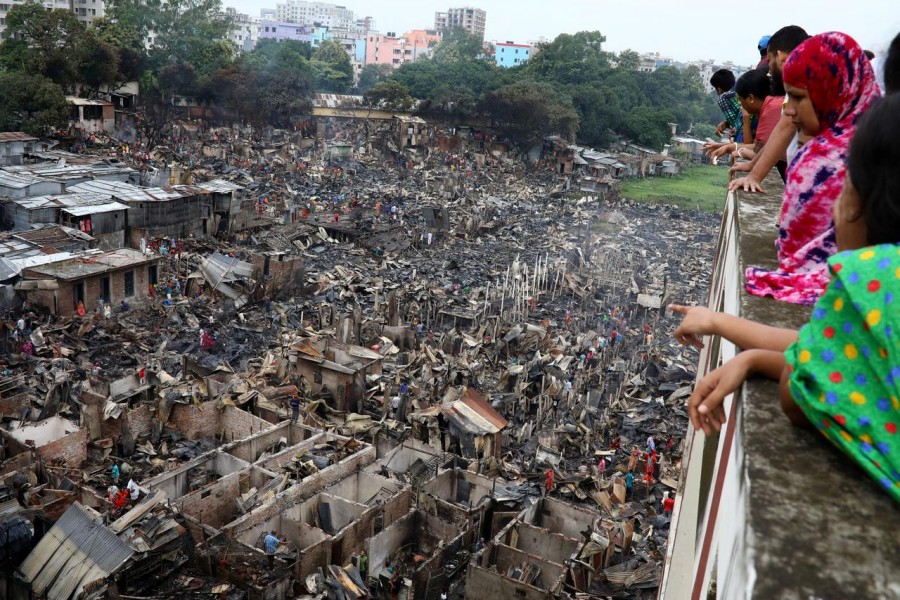On Friday last fires left two slums -one in the capital and the other in the port city -- burnt down. The fire that broke out at Chalantika Jhilpar slum in Mirpur area of Dhaka reportedly consumed about a hundred shanties and the other one devastated about 160 shanties in a slum at Mirjarpole in Muradpur of Chattogram. Although no casualties were reported from the slum fire in the port city, two suffered burn injuries in Mirpur fire incident and one of them succumbed to the injury in hospital.
Understandably, the fire at Chalantika slum broke out at an odd hour --at 4:15 am - when most people remain asleep. Mercifully there were not more casualties! Again, the origin of the fire in Chattogram is attributed to an electric short circuit but the cause of the fire in Dhaka could not be ascertained immediately.
Whatever may be the origin of Friday's fires, the fact remains that unplanned urbanisation has increased the risk of fires manifold. Slums are most vulnerable to fires for understandable reasons. Notably, only five months back the Mirpur slum was devastated by a fire. There is no reason to think that accidental fires alone burn down slums in cities. Powerful players behind slum economy pull the string to suit their purpose. Or else, it is impossible to explain the exponential proliferation of slums on government and disputed lands and then their total eviction. Some of the eviction drives were no less disastrous for slum-dwellers than accidental fires.
This is inhuman. No arguing that slum-dwellers' services are indispensable as the informal sector of big cities mostly run on their labour. In fact, these people act as the engine of informal economy in cities. In exchange, they are meted out a raw deal for their services. True, they migrate to cities out of desperation but unless their service is in demand they could not have stayed here for long. Now since they have proved their usefulness, it is rational that their case was considered sympathetically and in an organised manner.
The shanties they live in can in no way allow them to live better than a sub-human life. Then time and again their slums are gutted by fires or they get evicted. The most shocking revelation is that the rent they pay per square feet for living in shanties is often higher than that paid in posh areas. How? One has to take into account the total space and the number of inhabitants living there. The rate of rent, studies by NGOs found, is higher than in some of the expensive and privileged areas in the city.
How cruel and atrocious it proves to slum-dwellers when they see the little property they manage to acquire go up into smoke! Particularly when a tragedy like this befalls them in time of hostile weathers such as biting cold of winter, as of now, or in the rainy season, their sufferings know bound. The little help they receive is too inadequate to rebuild their life. This dimension of urban poverty has remained largely unattended and even unanalysed.
If the informal economy is considered, the property loss from such tragic incidents is enormous. So it would be wise to build low-cost permanent housing for people who have no other option but to seek shelter in a slum. Only a few days ago inhabitants of a slum demanded that they be provided with approved power connection. It is a reasonable demand. It may indeed reduce the chances of mishaps arising out of illegal power connections. At least some safety measures would be followed if the utility service does it officially.
These have to be temporary measures until the dwellers are moved to permanent settlements. The incumbent government has already gone for some low-cost housing for the urban poor. More such facilities have to be created under a programme for rehabilitating this hapless population.


